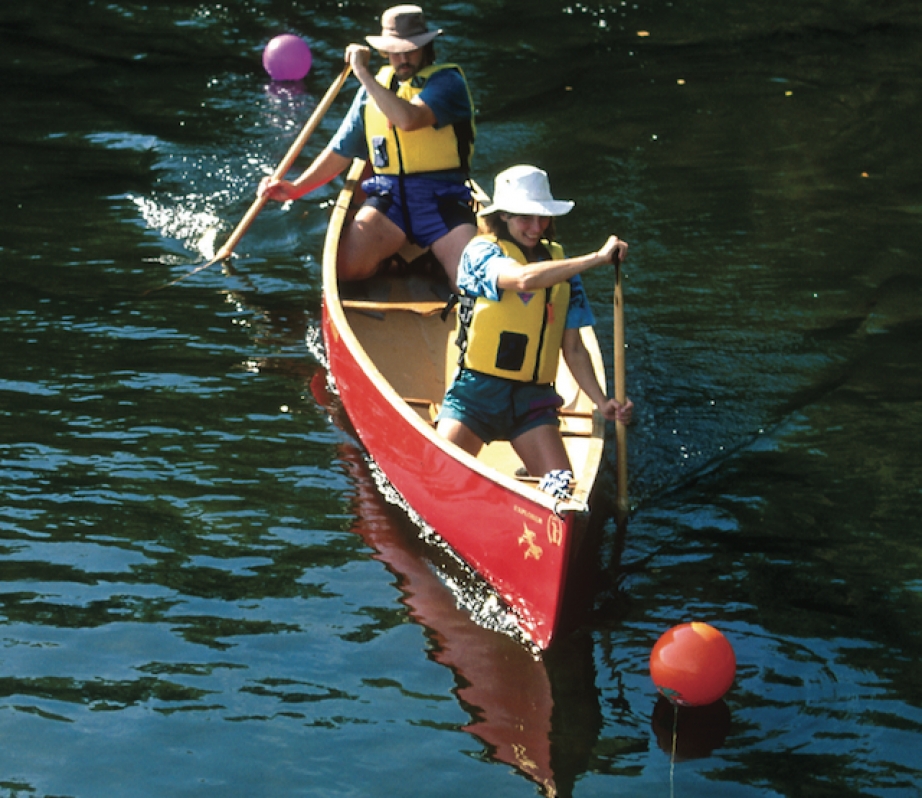A sideslip is an elegant way to shift your canoe sideways while underway. It is an efficient way for both solo and tandem paddlers to avoid obstacles while maintaining forward speed because it avoids the drag associated with turning or spinning the canoe. Sideslips employ static strokes—the paddle stays stationary and the pressure of the water against the blade produces the force that moves the canoe laterally.
The same strokes—the static pry and static draw—are used for tandem sideslips in either direction. In this sequence, with the bow paddler paddling on the left, a static bow pry and stern draw are used to sideslip the canoe to the right. To sideslip to the left, a static bow draw and stern pry would be used.
A sideslip is an elegant way to shift your canoe sideways while underway.
1. Approach with forward momentum. Since the strokes are static they rely on water pushing against the blade to influence the path of the canoe. Tilt the canoe away from where you want to go to keep from catching the canoe’s leading edge once you start to slip.
2. The bow paddler places a static pry while the stern paddler places a static draw. Both blades are angled 15 to 20 degrees away from parallel to the centreline. Aim the leading edge of the blade where you want to go.
3. The bow paddler should adjust her blade angle so the bow does not sideslip faster than the stern. The stern paddler adjusts his blade angle so the canoe remains pointed in the intended direction.
4. Once the canoe has slipped far enough or lost the momentum necessary to slip further, follow up with forward strokes.
This article was adapted from Gary and Joanie McGuffin’s Paddle Your Own Canoe.

This article first appeared in the Summer 2006 issue of Canoeroots Magazine.




